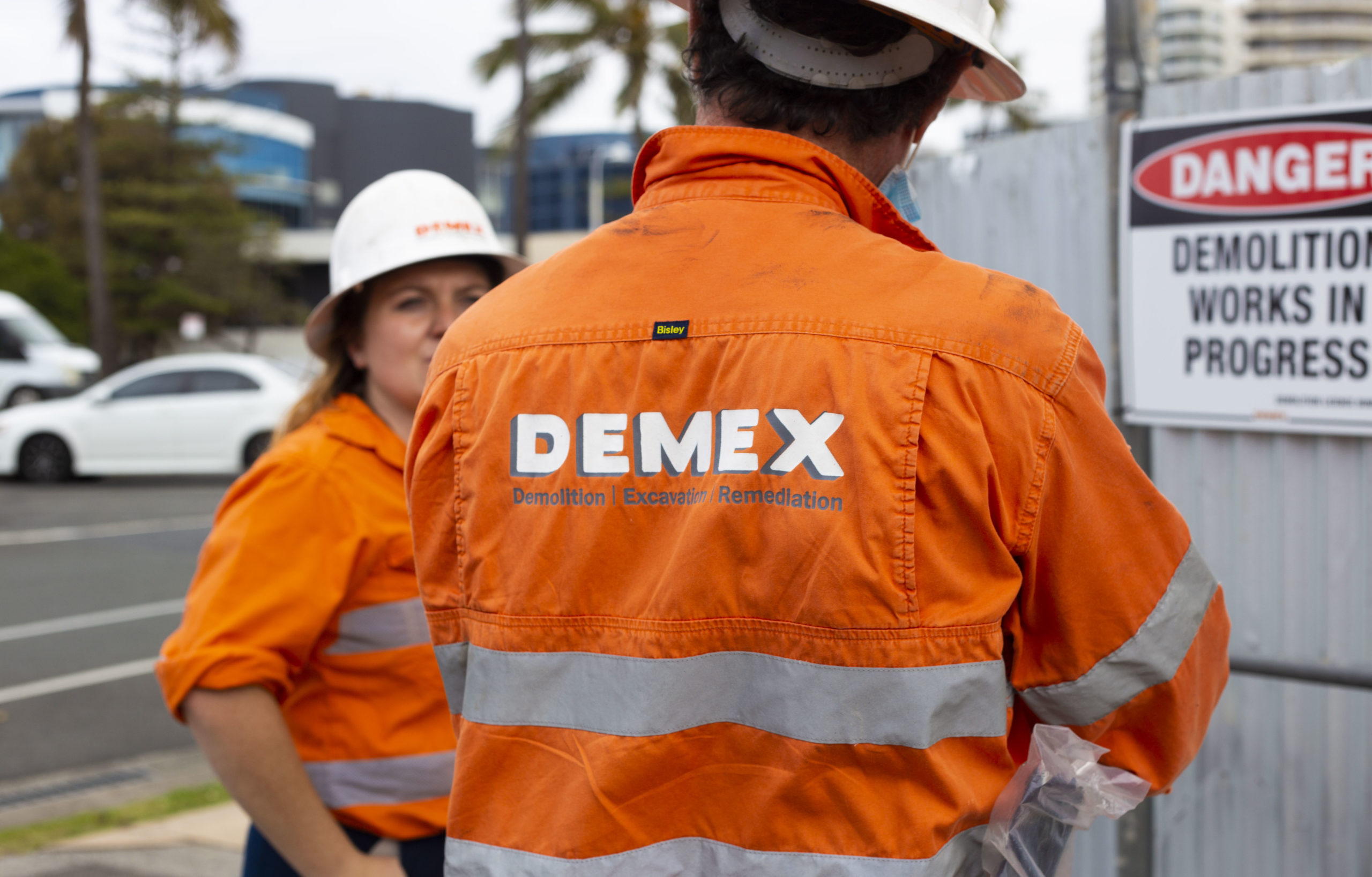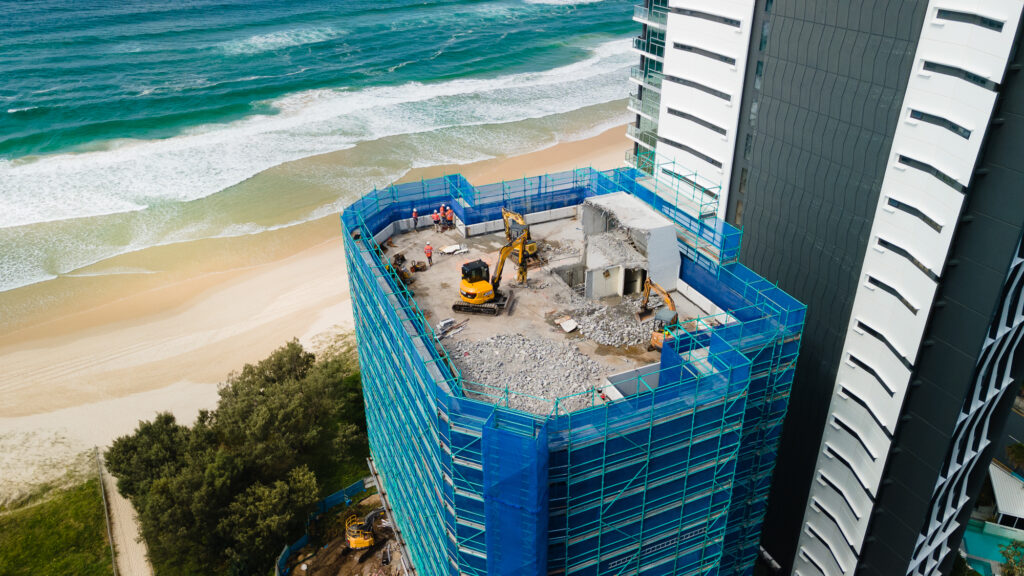Demolition methods: What every new industry starter needs to know

To an outsider, demolition methods might seem unsophisticated, however, the opposite is in fact true. Safe demolition methods are contingent on many factors: management of risk, capability, experience, and the skills of the team to perform the work. Choosing the right demolition method for each project requires careful planning and understanding of impacts from the chosen pathway. It’s a given that safety is kept front of mind always.
According to Safe Work Australia, demolition work is defined as “any work that is connected with the demolition of a structure…..to demolish or dismantle a structure or part of a structure that is load bearing or otherwise related to the physical integrity of the structure.” The definition also states that demolition is high risk work.
On that basis alone, if you’re a new starter to demolition and the construction industry, then gaining at least a high level understanding of demolition methods is a good place to start. In this article, we cover manual demolition, craning, high reach, top down demolition, induced collapse demolition, and blasting.
Manual demolition
Safe Work Australia describes manual demolition as any technique where hand tools are used. Like all other demolition methods, manual demolition comes with its share of hazards, with unexpected collapse, falls, falling objects, and exposure to noise, dust, and hazardous materials chemicals among them
Many projects will commence with manual demolition, which require labourers to methodically work through sites in preparation for subsequent project stages, such as structural demolition or reinstatement, as well as other demolition methods.
For anyone wanting a career in demolition, getting involved in a hands on role at ground level is a great place to start. Many skills can be taught on the job and if you show initiative and enthusiasm, and acknowledge that safety is key, you can expect to progress through the ranks as opportunities present.
At DEMEX, we strive to maintain the highest standards of safety in all aspects of demolition project delivery. Our workers are trained – often on the job – and equipped with the right personal protective equipment (PPE), including uniforms, boots, gloves, glasses, and hard hats. And while we appreciate that skills and experience are important, a worker’s attitude is just as important.
>>> Read about how we approached the Jupiter’s Hotel & Casino refurbishment project , which was a largely manual demolition project, involving a ‘soft strip’ of this ionic Gold Coast venue.
Craining
The use of mobile cranes is common for projects on which deconstruction or dismantling of structures cannot be achieved using other methods. Cranes are effective at lifting and removing components, as well as performing works at heights and for projects in high density locations.
DEMEX has successfully used crane lifts on several projects including a major bridge demolition project in regional New South Wales and Chinamans Creek Bridge in north Queensland project. For the major NSW bridge demolition project, DEMEX deconstructed an old bridge, which spanned 307 metres across the waterway, using self-propelled modular transporters (SMPTs). This allowed the team to lift the bridge span as a single unit. The back spans of the bridge were lifted and removed in full using a 400 tonne crawler crane and a M16000 Manitowoc M16000 fitted with a Maxer, effectively making it a 700 tonne crane
>>> Learn more: Read about our project success on the Chinaman’s Creek project
Top down demolition
In previous articles, we’ve written about the challenges of top down and high reach demolition. On any given day, a site supervisor and site team might be faced with:
- Undocumented structural changes which have the potential make a project more complex and result in methodology changes.
- Hidden materials, such as asbestos, which require removal following specific safety protocols.
- Hazards associated with the demolition method.
While each project has its own unique challenges, top down demolition projects are perhaps among the more impressive examples of demolition. As the name suggests, top down demolition involves the deconstruction of a structure by starting at the top and working down to lower levels or the ground.
Effective on commercial, industrial, mining, and infrastructure projects, top down demolition is an alternative method to high reach demolition for the deconstruction of tall structures. Where high reach excavation is achieved by using excavators fitted with specialised long reach booms that can increase a machine’s reach to more than 50 metres, top down demolition typically involves smaller equipment that is lifted onto the building rooftop.
Of course, high reach excavators deliver versatility through the use of multiple attachments that allow work to be completed at height and on the ground, however, other plant and equipment, such as smaller excavators, cranes, and skid steer loaders all contribute to high reach projects too.
Whether top down or high reach demolition is used, equipment must be fit for purpose, and meet the number one priority of keeping workers safe. For their part, workers must be trained and competent to operate any equipment. Demolition contractors are obliged to ensure workers’ licences are current before they step on site.
>> Learn more: Read about high reach demolition here
Explosive demolition (blasting)
In some circumstances, explosive demolition – also referred to blasting or implosion – is the most appropriate method of demolition. It involves controlled use of explosives placed strategically in structures that are detonated in a timing and sequence allowing the structure to be demolished to the ground, while limiting the impact to the surrounding environment. We work with specialist explosive contractors and engineers if projects require this demolition method and augment this with our team who have blasting experience.
Are you looking for a change and don’t mind getting your hands dirty? Demolition is a specialist area in the construction industry that continues to enjoy growth. Even if you have limited or no experience (and a great attitude!), we can help you launch a career that offers interesting projects, as well as the chance to acquire new skills and grow personally.
DEMEX has capability in all demolition methods. We have grown an experienced team of professionals, including demolition labourers, machine operators, site supervisors, and project managers. More than skills and experience, we look for the right cultural fit and a growth attitude. Even if you have limited construction site experience, you are encouraged to talk to our people at careers@demex.com.au.






